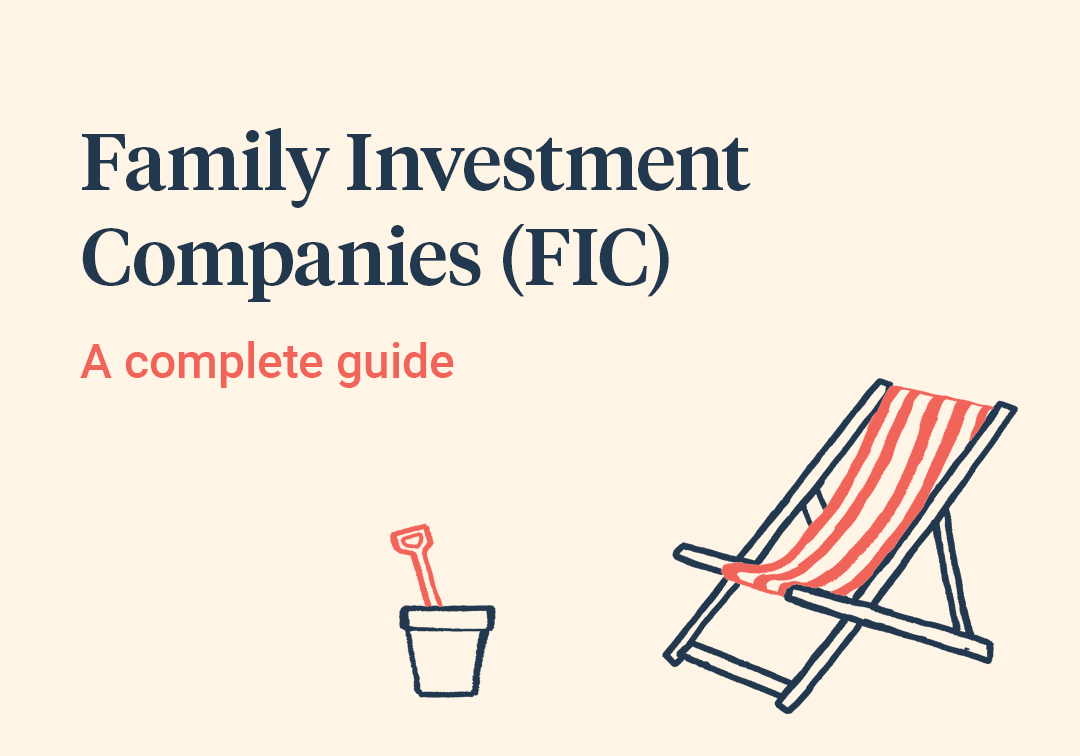Life interest trusts are becoming increasingly popular. As a financial planner, I am coming across a rising number of cases where a life interest trust is established via a will involving married couples and civil partners. Many factors underpin this, but there are some notable drivers. The number of blended families in the UK – that is, where partners have children from previous relationships – are on the rise. According to the ONS, there were around 781,000 stepfamilies recorded in the UK in 2021[1]. In addition, with an aging population, people are increasingly cognisant of the possibility of self-funding care in later life, and the impact this can have on assets left to beneficiaries.
While life interest trusts are not suitable for everyone, I have seen them work well in some situations. However, the opposite is also true, and I have witnessed a number of blunders which can undermine their effectiveness.
This article provides an overview of life interest trusts established through wills, explaining how they work, the key benefits and some fundamental considerations to help you decide whether this is right for you and your family, and how it can be most effective. I also provide a working example to aid understanding, and to identify where the need for financial advice may arise.
What is a Life Interest Trust?
Firstly, let’s define what a trust is. A trust is a legal arrangement created by a settlor, where ownership of property (cash, investments or actual property) is transferred to other individuals (the trustees). The trustees are responsible for holding and managing the asset for the benefit of other people (the beneficiaries).
How to avoid the 60% tax trap and more…

Did you know that people earning over £100,000 can pay an effective tax rate of 60%?
A trust can be set up during your lifetime by a deed or following your death through your will (this article focuses on will trusts). In the case of a will trust, the settlor is the individual who has died. Their will outlines the terms of the trust, such as who the trustees and beneficiaries (or potential beneficiaries) are, the property subject to the trust and other powers and provisions.
A life interest trust (also known as an interest in possession trust) identifies two types of beneficiaries with different rights. One beneficiary is given the right to use the trust asset for the remainder of their lifetime. Typically, this involves the right to live in a property rent free, or receive income generated from the trust assets [2]. This beneficiary is known as the life tenant. Upon the life tenant’s death, the trust fund is passed to other beneficiaries, who are entitled to the capital – they are known as “remaindermen”.
In what scenario might this feature?
This arrangement is commonly used with married couples or civil partners and can concern jointly owned assets such as the family home. In this scenario, both individuals will create mirror wills so that, on first death, their share of the home (e.g. 50%) which is owned as tenants in common is settled into a life interest trust and does not pass to the survivor absolutely. When the first person dies, they are the sole settlor of the trust, and their share of the property (or other assets) passes into it.
Under the terms of the trust, the surviving spouse is the life tenant and has a right to live in the property and use it rent free. Upon the survivor’s death, their share of the property is passed on to the beneficiaries in their will. However, the trust’s share of the property is distributed to the remaindermen, as stated in the will of the first partner who passed away.
The trust does not exclusively need to concern a family home. The will can be drafted to settle other assets such as cash, savings and investments into this trust.
What are the benefits of a life interest trust?
Control over asset distribution – The trust provides greater control over how assets are distributed after death. This is particularly useful for blended families, where there may be children from previous marriages. If all assets pass to the surviving spouse absolutely, there is no guarantee that they will be passed down to the intended beneficiaries after their death. For instance, the surviving spouse could amend their will and direct assets to their own children or even a new partner, thus disregarding other children from a previous relationship.
Using a trust will ensure that the needs of the surviving spouse are considered with the right to income, while the deceased spouse’s assets are passed down to the intended beneficiaries.
Care costs – Assets held by the trust are ringfenced and are not considered to form part of the life tenant’s personal wealth which would be used towards funding long term care. This will protect assets in the event that the survivor required long term care, and all wealth was used to fund care fees.
Financial security for the life tenant – The survivor has the security of remaining in the property, or right to income from any invested assets.
Spousal exemption – If the life tenant is the deceased’s spouse, the spousal exemption will apply for Inheritance Tax (IHT) purposes. This means settlement of assets into the Trust on first death does not give rise to an IHT charge. The deceased’s IHT allowances are also unused and could be claimed by the survivor on their death. Additionally, no 10 year periodic or exit charges apply, which are generally applicable to discretionary trusts [3].
However, for IHT purposes, HMRC considers the trust fund to form part of the estate of the life tenant and depending on the estate value and available allowances, IHT could fall due on their death.
Please note: Different IHT rules apply if a life interest trust is set up during your lifetime rather than via a will (full details are outside the scope of this summary).
Flexibility – The trust can be tailored to suit specific circumstances and the needs of the life tenant or remaindermen. Provisions can be included to govern what happens in the event of downsizing or moving home, and the power to appoint capital or provide loans to the life tenant if required.
Changes – The trust is not established until the first person passes away. Until this point, the arrangement can be changed simply by writing new wills.
Do you need cover to protect against illness or death?
Our advisers can give you the peace of mind that you and your family are protected against the financial consequences of the unexpected. Get in touch to discuss how we can help you.

What are the key considerations?
Unfortunately, no solution is perfect and there are some key factors to consider:
Administration – There are additional formalities required when you administer a trust, especially from a legal and tax perspective. This will need managing for the lifetime of the life tenant and will often involve input from professional advisers which will generate additional costs.
Limited control for surviving spouse – As the life tenant is only entitled to income, not capital, they may feel vulnerable as a result. They might not like the idea of having to ask the trustees for additional support by way of capital if required.
Taxation (income and capital gains) – For a life interest trust concerning a main residence, occupied by the life tenant, income tax is not a concern as there is no income. Additionally, if the property is sold in the future while the life tenant is still alive, the trustees should be able to claim Principal Private Residence (PPR) relief, thus avoiding any capital gains tax (CGT) due on any growth in the value of the property since it was subject to the trust [4].
However, if the trust includes investments which generate income, such as cash providing interest or equity-based investments paying dividends, income tax could be due. If income arising is paid to the life tenant directly, it is taxed on them taking into account their own personal allowances and reliefs [5].
If the trustees dispose of investments, and crystallise a capital gain, CGT could be due if the gain exceeds the trust’s available CGT allowance. The trust is entitled to a CGT allowance of £1,500, which is half the annual exemption available to individuals (however, this CGT allowance is further reduced if the deceased has set up more than one trust) [6]. Capital gains above the CGT allowance face a tax rate of 24% [7].
Inheritance Tax (IHT) – IHT mitigation will not be a key driver behind this arrangement, as the trust fund is included in the estate of the life tenant for IHT purposes. Therefore, depending on the value of the life tenants’ estate on death, IHT of 40% could fall due above available allowances.
If IHT is a concern, then this arrangement may not be appropriate. Alternatively, it could be used in conjunction with other measures to mitigate IHT, such as gifting or life cover. For example, while the life tenant is alive and has mental capacity, they can give up all or some of their life interest, allowing an advancement of capital to the remaindermen. This would be considered a Potentially Exempt Transfer (PET) for IHT purposes from the life tenant and will fall outside of their estate if they survive seven years. IHT could be due if they fail to survive seven years however [8].
Trustee selection – The trustees should be chosen carefully. In some instances, the best candidates are clear, but this is not always the case. Trustees have important roles and legal responsibilities and generally need to reach decisions unanimously (unless the trust deed states otherwise). If there are some family politics, or sensitivities, you always have the option of asking a professional, such as a solicitor, to act as a trustee. This can introduce an element of neutrality, but fees will be charged accordingly.
Seek legal advice – It is essential that you seek appropriate legal advice, to evaluate the suitability of such arrangement in light of your own circumstances. It is also vital the required legal steps are followed, and the wills are drafted appropriately.
Trust property and scope – It is important to agree what assets you want subject to the life interest trust, and this is made clear in the will. It is common for jointly owned property (i.e. a main residence) to be subject to this trust, but it is crucial the property is owned as tenants in common, than joint tenants. Under tenants in common, the distribution of your share of the property is determined by your will (which would direct it to the life interest trust, and not your surviving spouse or civil partner absolutely). Under joint tenants, however, ownership is passed automatically to the survivor, irrespective of what your will states [9]. For this arrangement to be executed properly, jointly held property must be owned as tenants in common. Therefore, the need to amend property ownership to tenants in common must be checked when the will is being drafted. The legal process of changing from joint tenants to tenants in common is known as ‘severance of joint tenancy’ [10].
Review periodically – Legislation governing trusts, taxation and estates is subject to change over time, as are your personal circumstances. It is essential to have any arrangements reviewed periodically, as suitability can change.
Registering the trust – When the trust is created on first death, if it is still in existence after two years, the trust will need to be registered with HMRC under the Trust Registration Service (TRS). The trust is exempt from registration for the first two years, unless a tax liability has arisen in the hands of the trustees and this needs to be declared and settled [11].
Life interest trust case study
Let’s look at an example:
Ray and Emily are married and live in England. They have a daughter together, Bella. Ray has a son, Leo, from a previous marriage. They own a property worth £1 million, with no mortgage, as tenants in common (50/50). Ray passes away first, and his share of the property (£500,000) is settled into a life interest trust, as directed by his will. Under the terms of the trust, Emily has a right to live in the property for the remainder of her life, rent free, as she is the life tenant. Ray’s will also appoints Emily, Bella and Leo as executors and trustees of the trust.
It’s worth noting that while Emily is a beneficiary (the life tenant), she can also act as a trustee. These roles are separate. By being a trustee, she can still exert control and influence over decision making. Additionally, appointing other trustees (Bella and Leo) is important, as it ensures the trust can continue to operate effectively in the event Emily is unable to fulfil her duties as a trustee (e.g. due to health or care needs).
After four years, Emily’s health deteriorates, and she moves into long term care. Bella and Leo, who are acting under a lasting power of attorney for Emily, and trustees of the trust, decide to sell the property. This gives rise to net proceeds of £1.2 million after expenses.
From the sale proceeds:
Emily’s share £600,000 (half of the sale proceeds) – This is owned by Emily personally and is used towards funding her care fees.
The trust’s share (£600,000) – Emily does not own this share of the property sale proceeds, as this belongs to the trust (and is therefore held in the name of the trustees). However, as the life tenant, Emily has a right to any income arising from the capital. For example, the trustees might invest the proceeds in a portfolio of income-producing assets (such as bonds, dividend-paying shares, or property funds). The income generated would be distributed to Emily and taxed at her marginal rate. Importantly, the capital within the trust is not treated as part of Emily’s personal assets for the purposes of a local authority care fees assessment.
When Emily passes away, Bella and Leo are entitled to the capital of the trust in equal proportion, as detailed in the will. A life interest trust may either name specific individuals as remaindermen (e.g. “Bella and Leo”) or use broader wording such as “any children of the settlor, whether born before or after the date of this will,” depending on how the will is drafted.
This is a prime situation where a need for financial advice arises. Emily’s funds will need managing in a way to ensure her care fees can be funded in the most sustainable, tax-efficient manner. The attorneys can consider options such as a care annuity, which provides a guaranteed income in return for a lump sum (which is tax free if payable directly to the care home), and or investments to generate income or capital growth. More information about long term care and funding options can be found here. As for the trust, the trustees are responsible for ensuring the funds are invested appropriately, considering Emily’s right to income and the beneficiaries right to capital after her death.
Do you need cover to protect against illness or death?
Our advisers can give you the peace of mind that you and your family are protected against the financial consequences of the unexpected. Get in touch to discuss how we can help you.

Article sources
Editorial policy
All authors have considerable industry expertise and specific knowledge on any given topic. All pieces are reviewed by an additional qualified financial specialist to ensure objectivity and accuracy to the best of our ability. All reviewer’s qualifications are from leading industry bodies. Where possible we use primary sources to support our work. These can include white papers, government sources and data, original reports and interviews or articles from other industry experts. We also reference research from other reputable financial planning and investment management firms where appropriate.
Saltus Financial Planning Ltd is authorised and regulated by the Financial Conduct Authority. Information is correct to the best of our understanding as at the date of publication. Nothing within this content is intended as, or can be relied upon, as financial advice. Capital is at risk. You may get back less than you invested. Tax rules may change and the value of tax reliefs depends on your individual circumstances.
About Saltus?
Find out more about our award-winning wealth management services…
Winner
Best Wealth Manager
Winner
Investment Performance: Cautious Portfolios
Winner
Top 100 Fund Selectors 2024
Winner
Best Places to Work 2024
£8bn+
assets under advice
20
years working with clients
350+
employees
97%
client retention rate



